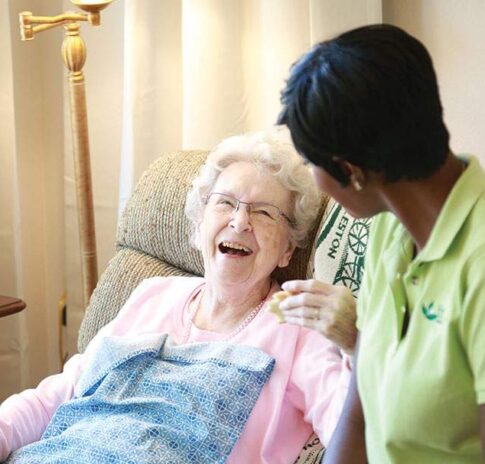April is National Parkinson’s Awareness Month to help bring awareness to a disease that one million people currently suffer from with 50 – 60,000 new cases being diagnosed each year. Although there is no cure, there are many medications and therapies that can help to relieve the symptoms.
Armed with information, you can help your family members live with this chronic and progressive disease.
What is Parkinson’s?
Parkinson’s is a neurological or brain disorder that affects the nerve cells in the portion of the midbrain that controls body movements. Although initially there may be no symptoms, there may be a gradual weakening of the limbs and trembling hands. Parkinson’s strikes people between the ages of 50 – 60, and can progress at different speeds with different people. Although the disease can strike both men and women, it is 50% more prevalent in men.
What are the major symptoms?
The four major symptoms of Parkinson’s are:
- Tremors or trembling in the hand, face, arm, legs, jaw or head
- Limb stiffness
- Slowness of movement
- Lack of balance and coordination
Symptoms usually begin gradually and get worse over time, impairing a person’s ability to walk, talk or move around freely over time. Other issues may include sleeping problems, depression, fatigue, and problems with memory.
How is Parkinson’s diagnosed?
Parkinson’s can be hard to diagnose, because there is no single medical test and many of the symptoms mimic other illnesses (Alzheimer’s. Wilson’s disease, Huntington’s disease). In fact, statistics indicate that more than 40% of people are undiagnosed and 25% are misdiagnosed. Unlike many other diseases, there are no blood or lab tests to diagnose the disease. Generally, it is confirmed when other conditions are ruled out. Doctors will use a combination of CT scans, MRIs, physical exams, family history and observation over time to try and pinpoint the diagnosis.
What are the causes of Parkinson’s?
In most cases of Parkinson’s, the cause is unknown. However, there are certain factors that can increase its likelihood.
- Genetic predisposition
- Environmental toxins (pesticides, carbon monoxide and metal manganese)
- Stroke
- Bad reaction to prescription drugs
- Brain tumor
- Thyroid disorders
- Head trauma
- Drug use
How can Parkinson’s be treated?
Drugs are the most traditional treatment for Parkinson’s. Levodopa combined with carbidopais is the main treatment for Parkinson’s disease although it may not help all symptoms. Anticholinergics may help with tremors and rigidity. Other drugs, such as bromocriptine, pramipexole, and ropinirole, mimic the role of dopamine in the brain, causing the neurons to react as they would to dopamine. Other people benefit from deep brain stimulation (DBS)
If you or a loved one has Parkinson’s disease making it difficult to perform daily tasks or run errands, the caregivers at FirstLight Home Care can help. We can help you stay comfortably in your home, remaining secure but independent.
Here are some resources to learn more about Parkinson’s disease:
National Parkinson’s Foundation
National Institute of Health
American Parkinson’s Disease Association
Michael J Fox Foundation for Parkinson’s Research
Parkinson’s Action Network
